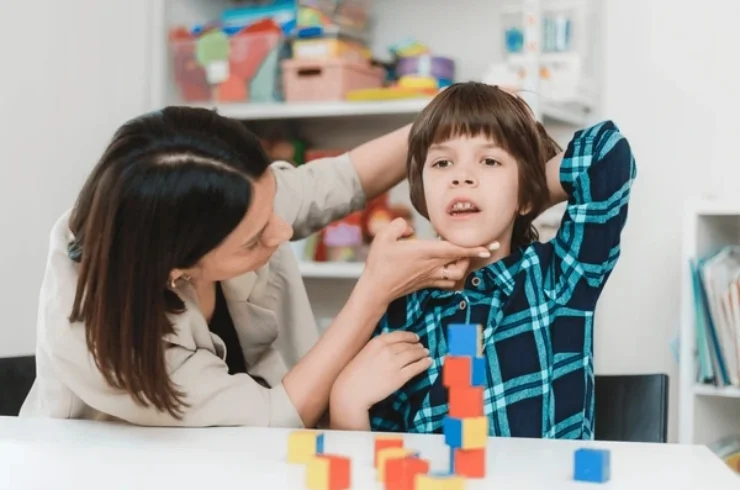
Articulation disorders occur when an individual has difficulty producing speech sounds correctly. This may involve substituting, omitting, or distorting sounds, making speech unclear. For example, a child might say “wabbit” instead of “rabbit.” These errors can result from developmental delays, muscle weakness, or hearing impairments. If left untreated, they may affect communication and self-confidence. Speech therapy helps improve pronunciation through targeted exercises, strengthening oral muscles, and enhancing coordination. Early intervention is key to helping individuals develop clear and effective speech patterns. If you or your child struggle with articulation, seeking professional speech therapy can lead to significant improvements.
Phonological disorders involve consistent speech sound errors that follow a pattern, making communication difficult. Instead of mispronouncing individual sounds, children with this disorder might replace entire groups of sounds (e.g., saying “tat” for “cat” or “pane” for “plane”). These patterns are normal in early speech development but should resolve as a child grows. If these errors persist beyond a certain age, speech therapy is recommended. Treatment focuses on recognizing sound patterns and retraining the brain to produce correct speech sounds. Addressing phonological disorders early can improve speech clarity and prevent long-term communication challenges in academic and social settings.


Apraxia of speech is a neurological disorder where the brain struggles to coordinate muscle movements needed for speech. Individuals with apraxia may know what they want to say but have trouble forming the correct sounds in the right order. Speech may be inconsistent, slow, or difficult to understand. Causes include brain injuries, strokes, or developmental conditions. Speech therapy is essential for improving communication, using repetitive speech exercises to strengthen muscle coordination. Therapists may also use visual and tactile cues to help individuals produce sounds correctly. With consistent practice and therapy, individuals with apraxia can improve their speech abilities.
Dysarthria is a motor speech disorder caused by muscle weakness due to neurological conditions like stroke, Parkinson’s disease, or cerebral palsy. It affects speech clarity, making words sound slurred, slow, or monotone. Some individuals also experience difficulty controlling their volume or tone. Dysarthria can impact communication, leading to frustration in daily interactions. Treatment includes speech therapy to strengthen oral muscles, improve breath control, and enhance speech clarity. Depending on severity, alternative communication methods may be introduced. Early intervention is crucial in helping individuals maintain their ability to communicate effectively, improving their confidence and quality of life.


Structural abnormalities, such as cleft palate, tongue-tie, or dental misalignments, can cause speech sound disorders. These conditions often lead to nasal speech, difficulty pronouncing certain sounds, or unclear articulation. While some structural issues require medical or surgical intervention, speech therapy plays a crucial role in helping individuals develop clearer speech patterns. Therapy focuses on strengthening oral muscles, improving breath control, and practicing correct pronunciation. Early assessment and intervention can significantly improve speech outcomes. If you or your child struggle with speech due to a structural condition, seeking professional guidance can help enhance communication skills and confidence.
Providing expert audiology, speech, and hearing care with personalized therapy solutions for all ages.